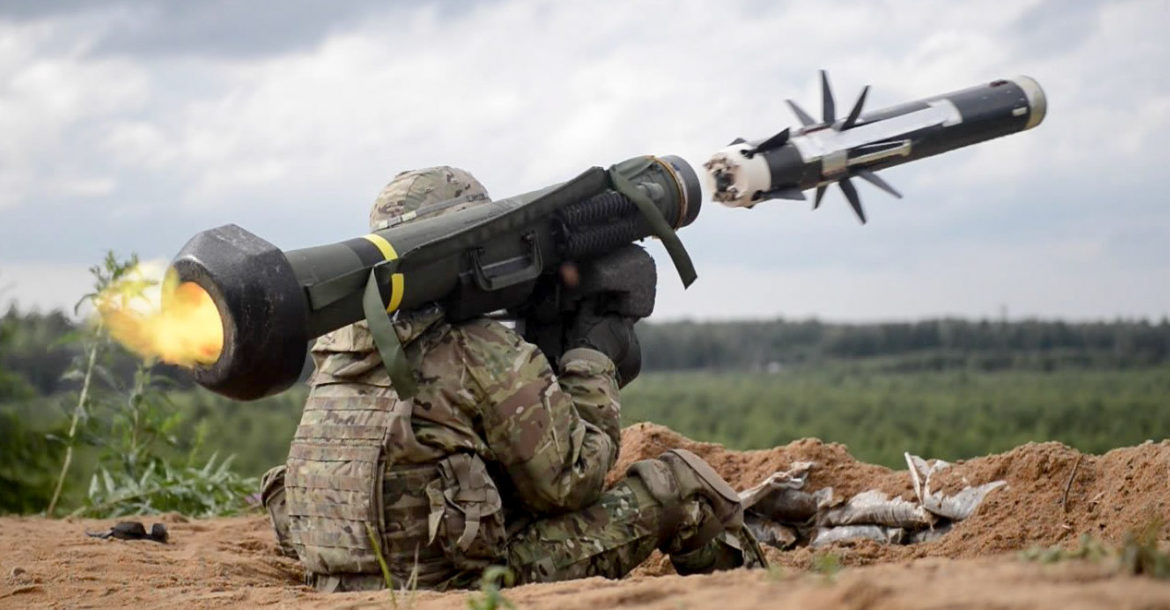The US had decided to help Ukraine by sending military aid worth more than $60 million, which included the Javelin ATGM (anti-tank guided missiles), in the aftermath of Russia’s annexation of Crimea in 2014 and the prolonged conflict in the eastern Donbas region.
The first shipment of Javelin systems worth $47 million was sent by Washington to Kyiv in April 2018, Reuters reported. Recently, the head of Ukraine’s top intelligence agency confirmed for the first time that the Ukrainian military in eastern Donbas had fired the American-made Javelin missiles at the Russian troops and the Moscow-backed separatists.
After Russia annexed Crimea in 2014, the Kremlin had sent additional forces into the Donbas region to provide support to the ‘separatists’ groups which have since then shown strong ties with Russia’s intelligence agencies.

How Deadly Are These Javelin Missiles?
The US-made FGM-148 Javelin is known to be one of the first portable anti-tank missile systems in the world. It was developed and produced for the US Army and Marine Corps by the Javelin Joint Venture between Lockheed Martin and Raytheon.
The Javelin has proven its mettle in Iraq, Afghanistan, and Syria and are known to work on any tank in the world. These missiles attack tanks by hitting them on their weak top armor.
Apart from this, the user of this system is exposed to little risk as compared to a traditional guided missile system. The lightweight Javelin can also be deployed on the ground during emergency combat scenarios to unleash “massive, unexpected tank invasions”.
The Javelin’s Command Launch Unit—CLU—has a sophisticated infrared sensor with multiple viewing modes. This includes a 4x optical zoom, a 4x green-lit thermal view, and a 12x narrow-vision zoom activated for targeting. The seeker in the missile system provides a fourth 9x thermal viewing mode. Thus, the CLU is capable of serving as an easy-to-use scanning device for the infantry.
The thermal viewers on the Javelin need to be cooled off to ensure proper functioning. Theoretically, this takes around 30 seconds, but it might take longer in areas, which have extremely warm temperatures. The system also incorporates multiple safeguards to avert or abort any accidental launch, The National Interest reported.
The key feature of the Javelin is the use of fire-and-forget technology, which allows the gunner to fire and immediately take cover. Additional features include its advanced tandem warhead, target lock-on before launch, and soft launch (it can be fired safely from enclosures and covered fighting positions), according to Military.com.
Ukraine receives new batch of Javelin anti-tank missileshttps://t.co/qP0bzSwLZw pic.twitter.com/BMQVNFSLAt
— Defence Blog (@Defence_blog) June 18, 2020
However, despite these capabilities, one major drawback is its range. The Javelin has a range of only 2.5 km. While this is adequate for most of the combat situations, older missile systems such as the Kornet boast ranges as long as 5 km.
Russia is also well aware of the capabilities of the Javelin missile systems and the country’s latest tanks come with a number of advancements to safeguard themselves from the threats posed by the American missiles.
The new ‘Relikt’ and ‘Mechanit’ Explosive Reactive Armour (ERA) systems are equipped with a double layer of radar-triggered ERA plates which are put in place to defeat the tandem charge warheads of the Javelin.
The Shtora and the newer AfganitActive Protection Systems also have the ability to deploy “soft-kill” multi-spectral grenades and flares which either hide the tank from the infrared sensors or divert them to a different heat source, according to The National Interest.
- Written by Kashish Tandon/EurAsian Times Desk
- Contact the author at: kashishtandon21@gmail.com
- Follow EurAsian Times on Google News